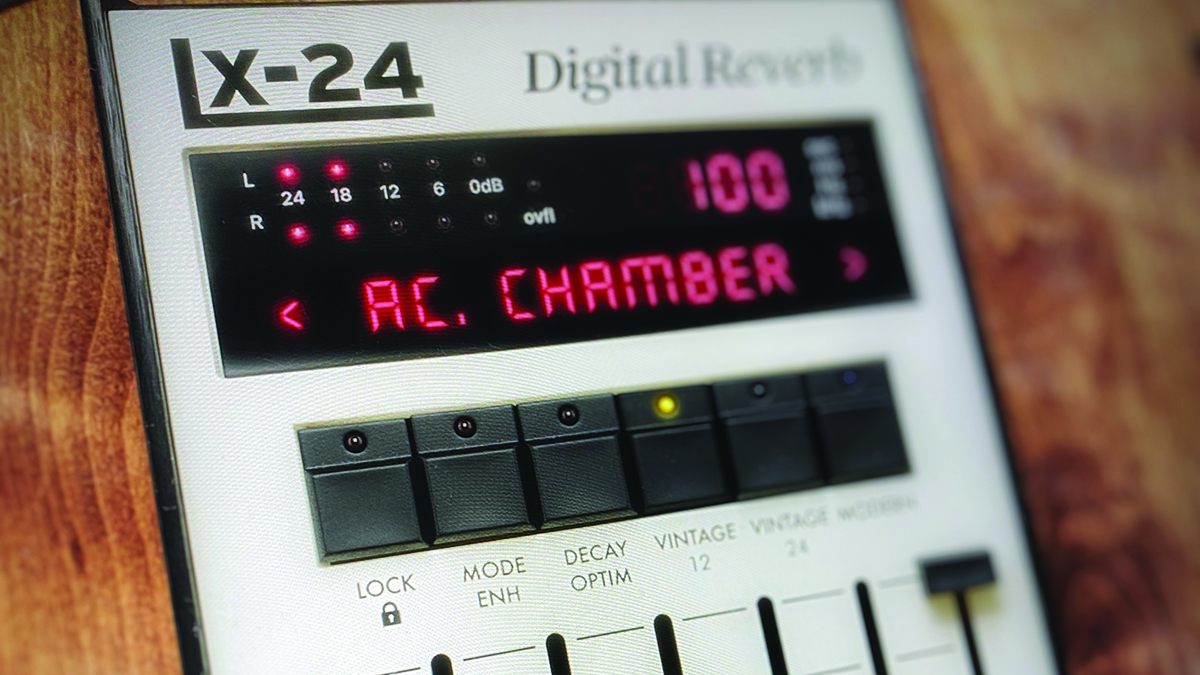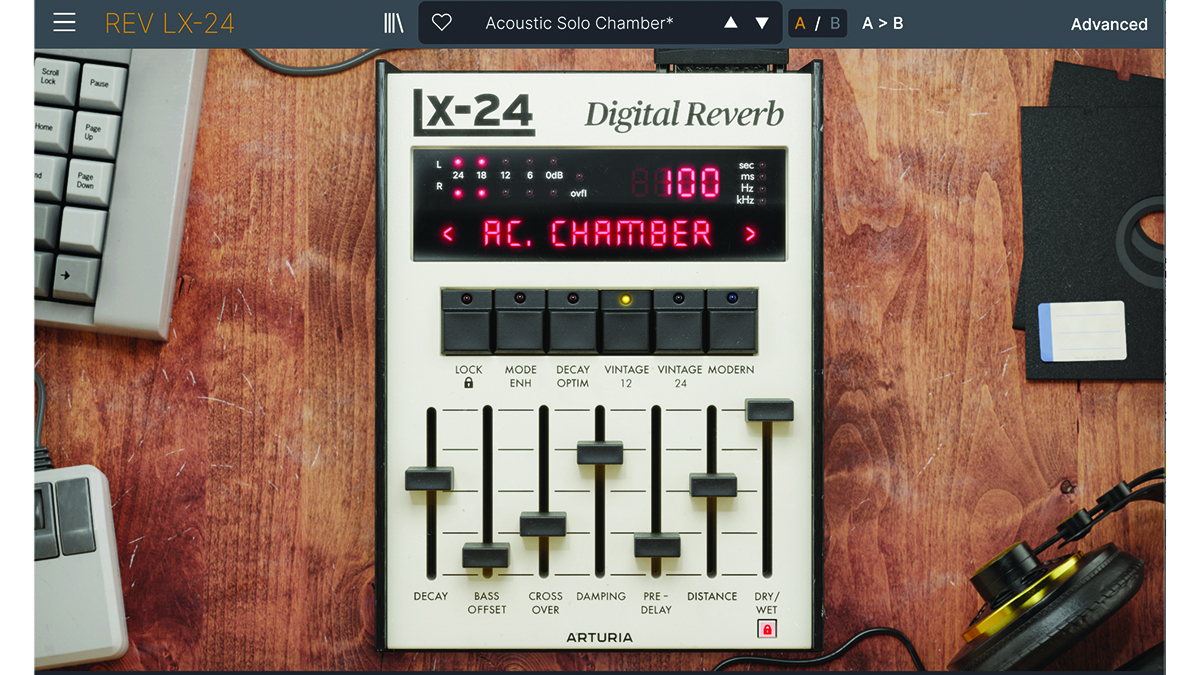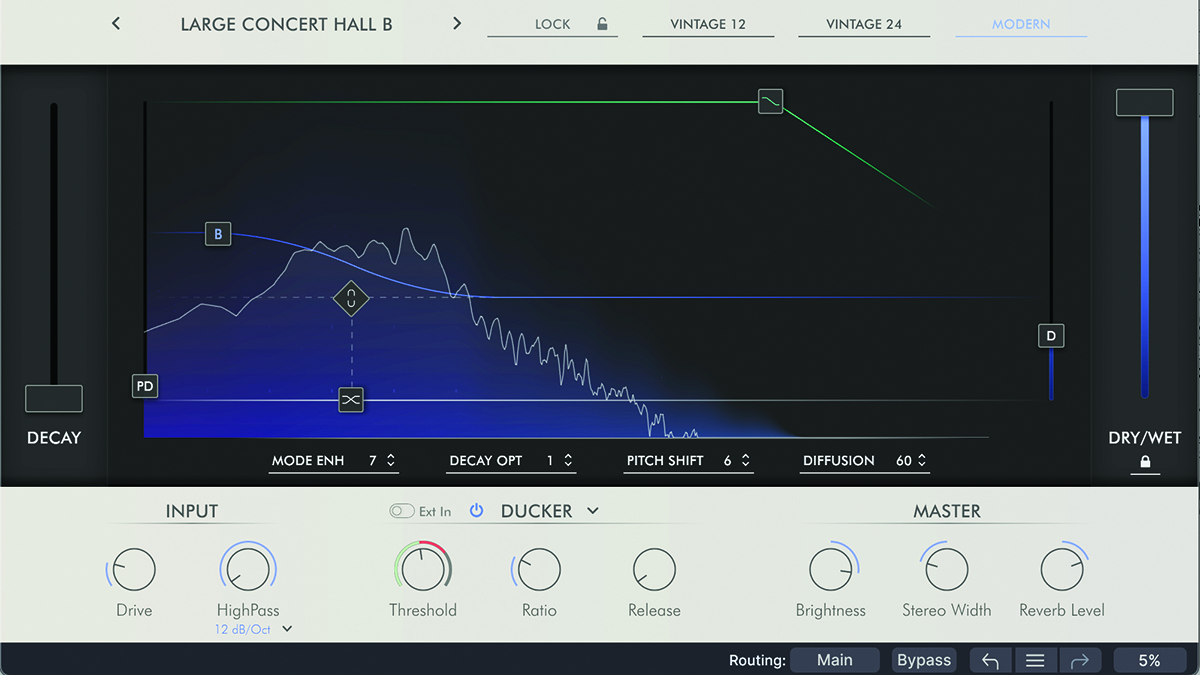
Arturia Rev LX-24: What is it?
Arturia’s run of vintage effect emulation continues apace. Having introduced several classic distortions to its FX Collection last year, the French brand has now turned its attention back to reverbs, adding an emulation of the Lexicon 224 to the line-up.
First released in 1978, the original 224 was part of the first wave of digital studio reverb units. It became one of the defining effects of its era and remains popular today for its distinctive spatial tones – its Concert Hall and Plate modes, in particular, were all over ’80s music, and remain an instant way to replicate the sound of that era.

Arturia Rev LX-24: Performance and verdict
Arturia’s recreation sports two UI modes. The first features a stylish graphical representation of the original unit’s distinctive, fader-equipped LARC remote control. The LX-24 emulates the original’s same eight reverb algorithms, although the control setup is a little different. Here the seven sliders control reverb Decay, Bass Offset, Crossover, Damping, Pre-Delay, Distance and Dry/Wet. Of these, Bass Offset lets users independently adjust the decay of the bass frequencies below a cutoff point set by the Crossover control. Distance alters the position of a virtual microphone, creating a sense of space.
Above the sliders are a set of buttons that can be used to adjust the character of the effect and select between emulations of the original’s A/D converters. Here, Mode Enhancement can add a modulated pitch shift to the reverb, while Decay Optimization will cause the reverb to adjust its response based on the incoming audio signal. Vintage 12, Vintage 24 and Modern buttons switch between emulating the 12-bit or 24-bit converters of the original – which filter out higher frequencies and, in 12-bit mode, add an audible noise floor – and a clean mode.

The second UI screen is the Advanced View. Rather than simply offering more advanced features, in the way that some Arturia plugins have done, this screen offers users a more modern way of interacting with the effect as a whole. For example, we get the same controls for Bass Offset and Cutoff, but here they’ve been overlaid onto a spectral analyser for better visualisation of affected frequencies.
There are deeper controls for adjusting the pitch shift applied by the Mode Enhancement, plus additional control over reverb diffusion. The Advanced View also adds options such as input filtering and distortion, along with tremolo, gate and ducking functionality, plus brightness and stereo width controls.
Arturia has been wise to not stick religiously to the original’s design
As with other Arturia effects, it’s all slickly designed and sounds fantastic, although the results are perhaps less distinctive than those achieved via other FX Collection plugins. The LX-24 is already a widely replicated reverb; there are direct clones out there from the likes of UA and Native Instruments, but its influence can be heard in countless algorithmic reverbs that have followed in its wake.
Arturia has been wise to not stick religiously to the original’s design though, as it’s in the Advanced View tools that the versatility and character shine bright.
MusicRadar verdict: Look beyond the retro-UI, and the LX-24 offers a fresh and capable new take on a classic reverb.
Arturia Rev LX-24: Hands-on demos
Arturia
Creative Sauce
CatSynth TV
Arturia Rev LX-24: Specifications
- KEY FEATURES: Algorithmic reverb plugin based on the Lexicon LX-224. Formats: VST, AU, AAX, MKS.
- CONTACT: Arturia







